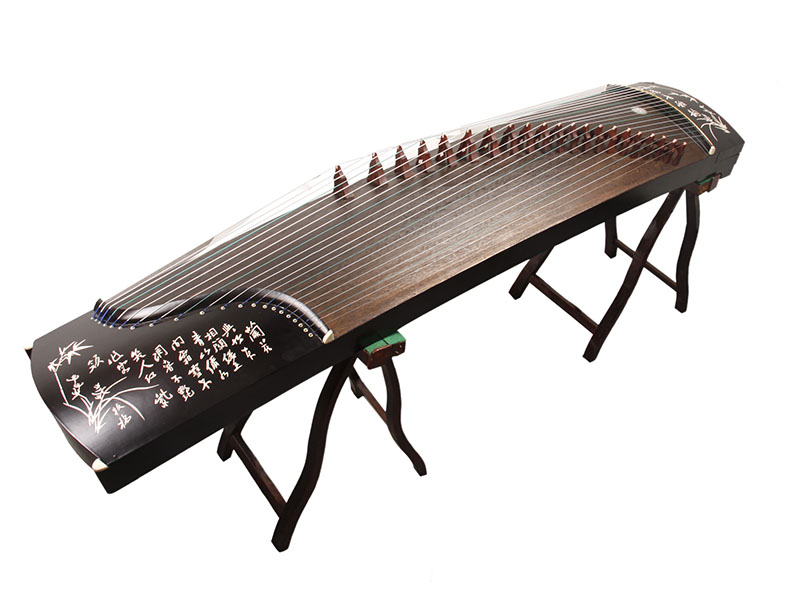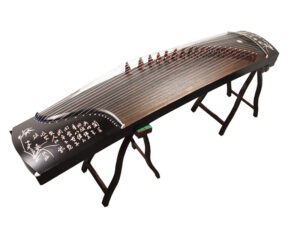Guzheng is a traditional stringed musical instrument that has been popular in China and other parts of Asia for centuries. The instrument has a rich history and has evolved over time to become a symbol of cultural identity for many people. Despite its popularity and importance, there is still debate over whether guzheng is a Chinese or Japanese instrument. In this article, we will explore the history, construction, playing techniques, and cultural significance of the guzheng and compare it to the Japanese Koto to understand the differences between these two instruments and their cultural origins.
Historical Background of Guzheng
The guzheng is an ancient Chinese musical instrument that has a history dating back more than 2,500 years. It originated during the Warring States period in China (475-221 BCE) and was initially played in the royal court. However, as time passed, the instrument became more popular and spread to other parts of China. The guzheng evolved over the years to become the instrument we know today.
The guzheng is made of a long, rectangular soundbox with strings stretched across it. The number of strings can vary from 15 to 25 depending on the style of the instrument. The strings are made of silk, nylon, or metal, and are tuned by adjusting the tension using wooden bridges placed under the strings.
The guzheng has a long history and has been an important part of Chinese culture for centuries. It has played a significant role in traditional Chinese music and is often featured in Chinese operas and folk music performances. The instrument has also gained popularity outside of China and is now played in many parts of the world.
The Chinese Guzheng
The Chinese guzheng is a beautiful and intricate musical instrument that has a unique sound and appearance. It is often made from high-quality materials and is decorated with intricate designs and patterns.
The Chinese guzheng is played by plucking the strings with the right hand while the left hand presses down on the strings to create different notes and tones. The instrument is played using a variety of techniques, including slides, harmonics, and glissandos.
The Chinese guzheng has a deep cultural significance in China and is often associated with traditional Chinese music and culture. It is often played at weddings, funerals, and other important cultural events. The instrument has also played a significant role in the development of Chinese classical music.
The Japanese Koto
The koto is a traditional Japanese musical instrument that has a history dating back more than 1,000 years. It originated in China and was brought to Japan during the Nara period (710-794 CE). The koto has a similar appearance to the guzheng, but there are some notable differences in construction and playing technique.
The Japanese koto is made of a rectangular soundbox with strings stretched across it. The number of strings can vary from 13 to 17 depending on the style of the instrument. The strings are made of silk or nylon and are tuned by adjusting the tension using wooden bridges placed under the strings.
The koto is played by plucking the strings with the right hand while the left hand presses down on the strings to create different notes and tones. The instrument is played using a variety of techniques, including slides, harmonics, and glissandos.
The koto has a deep cultural significance in Japan and is often associated with traditional Japanese music and culture. It is often played at weddings, funerals, and other important cultural events. The instrument has also played a significant role in the development of Japanese classical music.
Comparison between Chinese Guzheng and Japanese Koto
While the Chinese guzheng and Japanese koto share some similarities in construction and playing technique, there are also notable differences between the two instruments.
Differences in Construction and Appearance
The Chinese guzheng and Japanese koto both have a rectangular soundbox with strings stretched across it. However, the guzheng is typically longer and has more strings than the koto. The guzheng’s soundbox is also deeper, giving it a richer and more resonant sound compared to the koto.
The materials used to make the instruments are also different. The Chinese guzheng is often made of high-quality materials such as rosewood, while the Japanese koto is made of lighter materials such as paulownia wood.
In terms of appearance, the guzheng is often decorated with intricate designs and patterns, while the koto is more minimalistic in design.
Differences in Playing Techniques
The guzheng and koto share some similar playing techniques, such as plucking the strings with the right hand while the left hand presses down on the strings to create different notes and tones. However, there are some notable differences in playing techniques between the two instruments.
The guzheng uses a wider range of techniques, including slides, harmonics, and glissandos. The koto, on the other hand, relies more on vibrato and bending the strings to create different tones.
Differences in Musical Repertoire
The musical repertoire of the guzheng and koto also differs. The guzheng is often played in traditional Chinese music and is often featured in Chinese opera and folk music performances. The koto is often played in traditional Japanese music and is often featured in Japanese folk music and classical music performances.
Differences in Cultural Significance
The guzheng and koto both have deep cultural significance in their respective countries. The guzheng is often associated with traditional Chinese culture and is seen as a symbol of national pride. The koto is often associated with traditional Japanese culture and is seen as a symbol of cultural identity.
Conclusion
While the guzheng and koto share some similarities in construction and playing technique, there are also notable differences between the two instruments. The guzheng is a Chinese instrument with a long history and deep cultural significance in China, while the koto is a Japanese instrument with a similar history and significance in Japan. Ultimately, whether guzheng is Chinese or Japanese depends on one’s perspective, but both instruments are important symbols of cultural identity and national pride for their respective countries.













